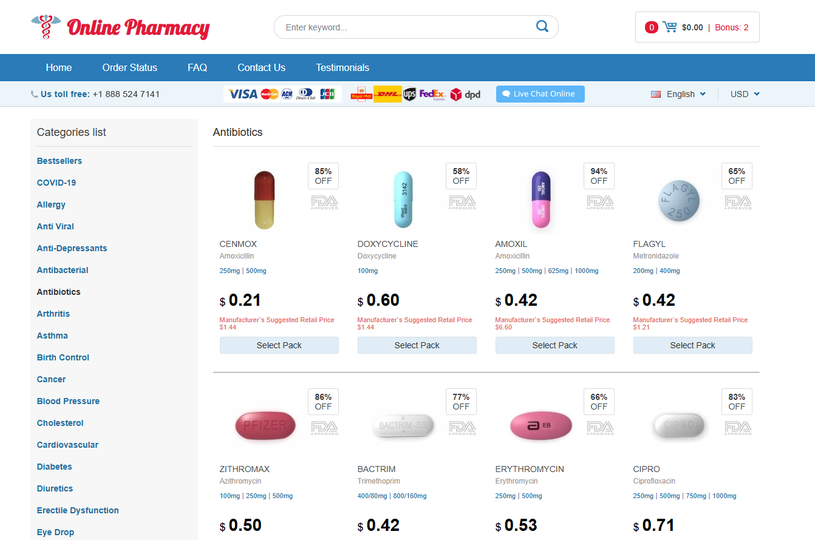To Minocin Online Visit Our Pharmacy ↓

Minocin's Role in Combating Antibiotic Resistance
Its effectiveness hinges on understanding the appropriate dosage, which varies depending on several factors including the severity of the condition and patient response. Always consult your healthcare provider for advice tailored to your specific situation and explore safer alternatives. From penicillin to tetracyclines, macrolides to fluoroquinolones, traditional antibiotics have expanded to include a wide range of classes, each with its own unique mechanism of action. While Minocin has been proven effective for many, it may not work for everyone. Moreover, research suggests that minocin might also be effective against other inflammatory skin conditions such as perioral dermatitis and hidradenitis suppurativa. Its ability to target specific bacterial mechanisms while minimizing resistance development makes Minocin a valuable asset in the fight against infectious diseases. Additionally, staying hydrated and managing stress can further support the gut's resilience during this period.
Tailoring Treatment: Adjusting Minocin Dosage Responsibly
These potential uses highlight the importance of continued research and exploration of Minocin's capabilities, potentially shaping the future of medicine and offering hope to patients worldwide. Laser therapy provides another option, targeting vascular symptoms but often with higher costs and multiple sessions. While not a standalone cure-all, when used as part of a comprehensive skincare regimen, Minocin can be an important player in mitigating the severity and frequency of acne breakouts. Minocin appears to help restore equilibrium within the gut flora, not only by reducing harmful bacteria but also by potentially fostering an environment conducive to beneficial microorganisms. For many, the journey begins with a hard copy of a prescription, directing patients on a path toward recovery. Proper administration, which often involves taking Minocin with food to minimize gastrointestinal side effects, can help ensure the medication's effectiveness and improve patient compliance. How Does Minocin Fit into Your Skincare Routine?One important factor to consider when comparing acne treatments is how convenient they are to use in your skincare routine.
A Brighter Future: Minocin's Potential in Overcoming Antibiotic Resistance
This characteristic not only ensures rapid onset of action but also facilitates convenient dosing regimens for patients. Research presents a compelling case against its use, pointing toward potential issues such as dental discoloration and bone growth inhibition in fetuses. As a result, it is highly effective against a wide range of bacterial infections. Before taking Minocin, it is important to be aware of the precautions and contraindications associated with this antibiotic. The impact of Minocin goes beyond its efficacy in treating bacterial infections. The introduction of Minocin marks a significant milestone in the field of rosacea treatment, presenting new possibilities for improving the lives of those affected by this chronic skin condition. Ensure you recieve the guidance of a healthcare professional to determine the optimal dosage for your individual needs.
Unraveling the Science Behind Minocin: How It Works Wonders
Though generally well-tolerated, it's important to understand how it interacts with your diet to maximize its effectiveness and minimize side effects. Medical professionals were intrigued by patient reports of improvement in skin condition while being treated with Minocin for unrelated bacterial infections. Its ability to penetrate the tissues and effectively reach the site of infection sets it apart from other antibiotics. It is crucial to address the challenges faced by individuals with rosacea and explore innovative treatment options to alleviate their symptoms and improve their quality of life. This prescription medication, known as a "script" in pharmaceutical slang, targets the root cause of acne by eliminating the bacteria that thrive within clogged pores. Ensuring open communication with your healthcare provider can help you manage and mitigate these risks effectively. Rosacea is a chronic skin condition that affects millions of people worldwide.
Gut Health and Minocin: Cultivating Beneficial Bacteria
Minocin works by targeting key cellular signaling pathways involved in inflammation, specifically the nuclear factor-kappa B (NF-κB) pathway. Always review your "RX" with your doctor to ensure the safest route for you and your baby. Additionally, Minocin possesses anti-inflammatory properties, which help to quell the skin's inflammatory response and alleviate the visible symptoms of acne. New mothers should also exercise caution. In exploring Minocin, patients may find solace in its benefits, yet navigating potential side effects is crucial. Monitoring and reporting any side effects promptly can help in managing any potential issues that may arise during minocin therapy. Additionally, long-term use of the drug has been associated with tooth discoloration, particularly when used in children whose teeth are still developing, and may potentially affect bone growth.
Unleashing the Superpower: Minocin's Success Stories Against Drug-resistant Bacteria
It is also crucial for healthcare systems to implement stewardship programs that monitor and guide antibiotic use. Minocin, known generically as minocycline, is a tetracycline antibiotic that has been found to possess anti-inflammatory properties which extend beyond its antibacterial action. Individuals express newfound confidence as their skin clears up, reinforcing Minocin's impact beyond mere physical symptoms. Below is a reference table for dosage guidelines:. Acne can be frustrating and disheartening, causing a great deal of stress and self-consciousness. Johnson’s therapeutic arsenal. The misuse of antibiotics in humans, agriculture, and livestock continues to fuel this trend, with even last-resort drugs losing their potency.
Success Stories: Real-life Examples of Minocin's Triumphs
Minocin research faces various challenges and ethical considerations. Understanding how Minocin works and its specific benefits can empower individuals to make informed decisions about incorporating it into their skincare regimen. This means that it not only treats the symptoms of acne but also helps to calm down the redness and swelling associated with breakouts. It's important to discuss these risks with your healthcare provider before starting treatment, especially if you have any pre-existing health conditions or are taking other medications that could interact with minocin. It works by targeting the bacteria responsible for causing acne, reducing inflammation, and preventing the formation of new blemishes. Minocin has demonstrated remarkable efficacy in clinical trials, showcasing its potential as a potent acne treatment. For instance, taking Minocin with food can help reduce nausea, while staying hydrated can alleviate feelings of dizziness.
Conclusion and Recommendation
Additionally, Minocin has been known to cross the blood-brain barrier, making it potentially useful in treating central nervous system infections. While the exact mechanism is not entirely understood, current research suggests that minocycline inhibits the production of pro-inflammatory cytokines, enzymes, and proteins that play roles in the RA inflammatory process. Minocin, the revolutionary acne treatment, has garnered a remarkable number of success stories from its users. This includes exploring alternative dosing methods, such as prolonged-release formulations or innovative drug delivery systems. It offers a comprehensive solution for those who want to achieve clear, healthy skin and regain their confidence. One area where Minocin has shown promise is in the treatment of acne. For instance, the concurrent use of isotretinoin and Minocin can increase the risk of developing pseudotumor cerebri, a condition characterized by increased pressure within the skull.
Who Should Avoid Taking Minocin?
Overall, Minocin's multifaceted mechanisms of action make it a promising treatment option for individuals with rosacea. It belongs to a group of antibiotics called tetracyclines, which work by targeting the bacteria that contribute to acne breakouts. Minocin is particularly effective against Lyme disease due to its ability to penetrate into the tissues where the bacteria may reside, including the central nervous system. As bacteria continue to evolve and develop resistance to commonly used antibiotics, the need for new and effective solutions becomes increasingly urgent. Additionally, the mechanism of action of Minocin ensures a longer-lasting effect compared to some over-the-counter remedies, providing users with a more sustainable solution. Individuals with rosacea often report sensations of stinging, burning, and tightness in their skin. To ensure successful treatment, there are some tips to keep in mind, such as following the prescribed dosage, maintaining good skincare practices, and being patient, as results may take some time to become visible.
Understanding Minocin: a Detailed Introduction to the Drug
Minocin is a revolutionary skincare solution that unlocks the secrets to age-defying skin. Proper "dosing" instructions (Sig) and monitoring are essential to minimize risks and ensure safe usage. It has shown particular efficacy in treating infections caused by pathogens such as Streptococcus pneumoniae, Staphylococcus aureus, Methicillin-resistant Staphylococcus aureus (MRSA), and Escherichia coli. Its unique formulation allows it to target and destroy harmful bacteria while minimizing damage to the body's beneficial bacteria. Consuming dairy products like milk, cheese, or yogurt can significantly impact the absorption of minocin. Minocin, a popular antibiotic known generically as minocycline, is frequently prescribed (Rx) by dermatologists for treating acne. The landscape of acne treatment is poised to evolve dramatically with the advance of next-generation Minocin therapies.





